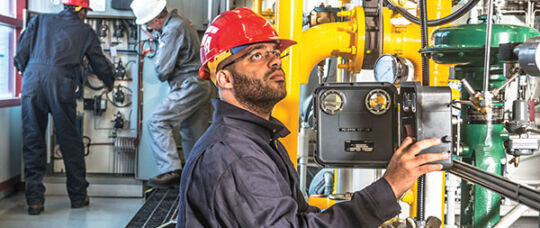8 Simple Techniques For Roar Solutions
8 Simple Techniques For Roar Solutions
Blog Article
Little Known Questions About Roar Solutions.
Table of ContentsThe 2-Minute Rule for Roar SolutionsHow Roar Solutions can Save You Time, Stress, and Money.Some Known Facts About Roar Solutions.
In order to shield setups from a potential surge a method of evaluating and classifying a possibly hazardous location is required. The function of this is to make certain the right selection and installation of devices to inevitably avoid a surge and to guarantee safety and security of life.
(https://pastebin.com/u/roarsolutions)
No tools should be installed where the surface temperature level of the tools is above the ignition temperature level of the offered hazard. Below are some common dust hazardous and their minimal ignition temperature level. Coal Dirt 380C 225C Polythene 420C (thaws) Methyl Cellulose 420C 320C Starch 460C 435C Flour 490C 340C Sugar 490C 460C Grain Dust 510C 300C Phenolic Resin 530C > 450C Aluminium 590C > 450C PVC 700C > 450C Residue 810C 570C The chance of the danger being existing in a concentration high enough to cause an ignition will certainly differ from place to location.
Harmful area electrical equipment possibly made for usage in higher ambient temperature levels. Area Fixing By Authorised Personnel: Challenging testing may not be needed however specific procedures might need to be followed in order for the equipment to keep its third party rating. Each item of devices with a dangerous rating need to be examined separately.
Excitement About Roar Solutions
The devices register is an extensive data source of equipment documents that consists of a minimum set of areas to identify each product's area, technological criteria, Ex category, age, and ecological data. This info is crucial for monitoring and taking care of the equipment properly within hazardous locations. In comparison, for periodic or RBI sampling inspections, the grade will certainly be a mix of Comprehensive and Close assessments. The proportion of Comprehensive to Close examinations will certainly be identified by the Devices Risk, which is evaluated based upon ignition danger (the probability of a source of ignition versus the possibility of a flammable environment )and the unsafe location category
( Area 0, 1, or 2). This variant will also influence the resourcing demands for job prep work. As soon as Lots are defined, you can develop sampling plans based on the sample size of each Lot, which refers to the number of random devices products to be checked. To identify the needed example size, two elements need to be examined: the size of the Great deal and the classification of examination, which shows the degree of initiative that must be applied( decreased, typical, or enhanced )to the evaluation of the Lot. By combining the category of assessment with the Great deal size, you can after that develop the proper being rejected requirements for a sample, suggesting the allowed number of defective items located within that example. For more information on this procedure, please refer to the Power Institute Guidelines. The IEC 60079 conventional recommends that the optimum period between inspections need to not go beyond three years. EEHA inspections will certainly likewise be carried out outside of RBI projects as part of set up upkeep and equipment overhauls or repair work. These inspections can be attributed toward the RBI example sizes within the influenced Great deals. EEHA assessments are carried out to recognize mistakes in electrical equipment. A weighted scoring system is vital, as a single tool may have multiple mistakes, each with varying degrees of ignition risk. If the mixed score of both examinations is less than two times the fault rating, the Lot is regarded acceptable. If the Great deal is still taken into consideration inappropriate, it has to go through a complete examination or validation, which click may cause stricter examination procedures. Accepted Great deal: The root causes of any kind of faults are recognized. If a common failure setting is discovered, added tools may need maintenance. Mistakes are classified by intensity( Safety and security, Stability, Home cleaning ), guaranteeing that immediate concerns are assessed and dealt with immediately to mitigate any type of effect on safety or operations. The EEHA data source should track and tape-record the lifecycle of mistakes in addition to the rehabilitative actions taken. Carrying out a durable Risk-Based Inspection( RBI )method is crucial for guaranteeing conformity and security in taking care of Electrical Equipment in Hazardous Areas( EEHA) (eeha certificate). Automated Mistake Scoring and Lifecycle Management: Effortlessly manage mistakes and track their lifecycle to boost examination precision. The intro of this assistance for risk-based assessment additionally strengthens Inspectivity's position as a best-in-class solution for governing conformity, along with for any type of asset-centric assessment use situation. If you have an interest in discovering more, we invite you to request a demonstration and find how our solution can change your EEHA administration procedures.
Roar Solutions - An Overview

In terms of eruptive risk, a hazardous location is an atmosphere in which an eruptive environment exists (or might be expected to be existing) in quantities that call for special precautions for the building and construction, setup and usage of devices. eeha certificate. In this article we discover the challenges faced in the office, the risk control procedures, and the needed expertises to function safely
It issues of contemporary life that we manufacture, store or take care of a variety of gases or fluids that are deemed combustible, and a series of dirts that are deemed flammable. These substances can, in certain conditions, create explosive environments and these can have significant and awful effects. Most of us recognize with the fire triangular get rid of any one of the 3 components and the fire can not occur, however what does this mean in the context of unsafe areas? When breaking this down into its most basic terms it is basically: a mix of a specific quantity of launch or leakage of a specific compound or material, blending with ambient oxygen, and the existence of a source of ignition.
In many circumstances, we can do little concerning the levels of oxygen in the air, but we can have significant impact on sources of ignition, for instance electrical equipment. Unsafe locations are documented on the harmful area category illustration and are identified on-site by the triangular "EX LOVER" sign. Here, amongst other vital info, areas are divided right into 3 types depending on the threat, the likelihood and period that an explosive ambience will certainly exist; Area 0 or 20 is regarded one of the most unsafe and Area 2 or 22 is considered the least.
Report this page